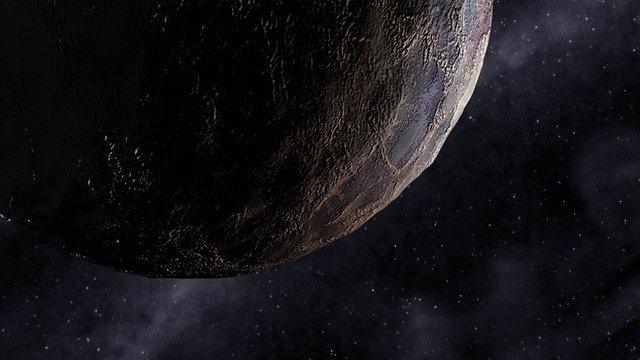The New Horizons Pluto fly-by - as it happened
- Published
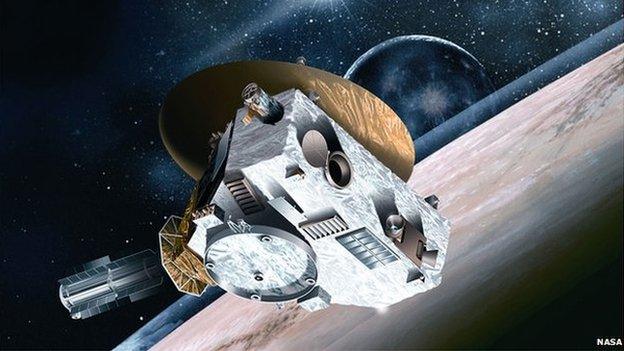
Nasa's New Horizons probe has made a historic journey past Pluto today.
The probe has been travelling to Pluto for the last nine years, and today it's hoping to take the clearest pictures ever of the dwarf planet.
Pluto is 3.26 billion miles away from Earth and is the only body in our solar system to have not yet been visited by a probe.
Scientists received one last message from the probe last night, before it turned its attention back to Pluto.
New Horizons should get back in touch with Earth to send back the pictures and data at around midnight tonight. But there's lots happening before then.

14:58pm - New Horizons' gadgets
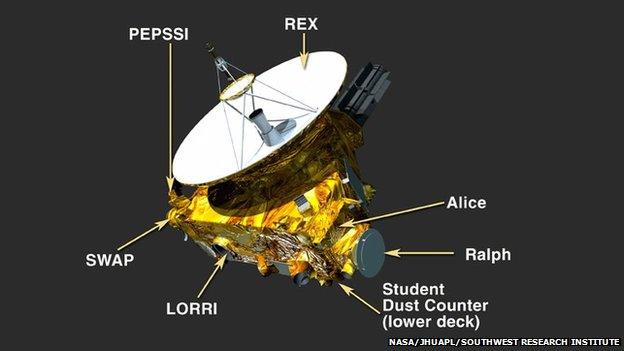
As the New Horizons spacecraft finishes its fly-by of Pluto, it will be gathering all sorts of data about the dwarf planet, using a number of gadgets fitted to it.
They are:
Ralph: A visible and infrared imager. This helps us to see the pictures New Horizons takes in colour, and also helps us to see the hot and cold areas on Pluto.
Alice: An ultraviolet imaging spectrometer; which looks at Pluto's atmosphere, and the atmosphere of objects around Pluto.
REX: (Radio Science EXperiment) Measures the atmosphere and temperature.
LORRI: (LOng Range Reconnaissance Imager) A super high-quality camera which can take pictures from really far away - LORRI also helps to map the geography of Pluto.
SWAP: (Solar Wind Around Pluto) Solar wind and plasma spectrometer, which looks at how Pluto is affected by solar wind.
PEPSSI: (Pluto Energetic Particle Spectrometer Science Investigation) this gadget measures the density of ions escaping from Pluto's atmosphere.
SDC: (Student Dust Counter) Built and controlled by students; the SDC measures the amount of space dust hitting the New Horizons probe during its journey across the solar system.
The research from these gadgets will help us to learn more about what Pluto looks like, what it is made from and how cold it is on the dwarf planet.

13:20pm - Scientist's reactions
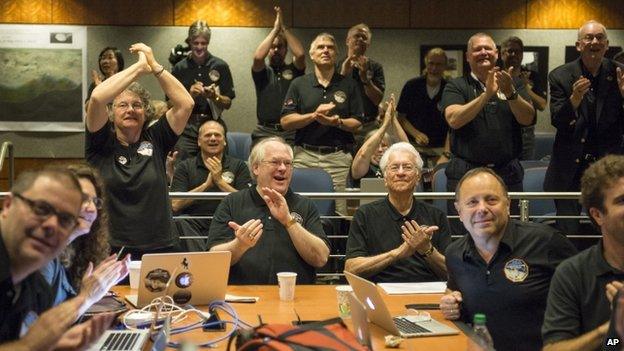
Members of the New Horizons Science team at the Johns Hopkins University Applied Physics Laboratory, in America, celebrate the latest picture of Pluto
These scientists at the Johns Hopkins University Applied Physics Laboratory, in America celebrated the fly-by of the probe and the latest picture of Pluto.
Alan Stern, the New Horizons principal investigator said: "It's really historic what the US has done, and the New Horizons team is really proud to have been able to run that anchor leg and make this accomplishment."

13:10pm - When will we hear back from New Horizons?
The New Horizons probe is now continuing its journey past Pluto, at a distance of 8,150 miles from its surface, that's about the same distance as the Earth's diameter.
It has taken the probe over nine years to travel to Pluto, and we won't see any of the pictures or research until midnight tonight, when the probe sends its findings back to Earth.

12:50pm - Fly-by is go!
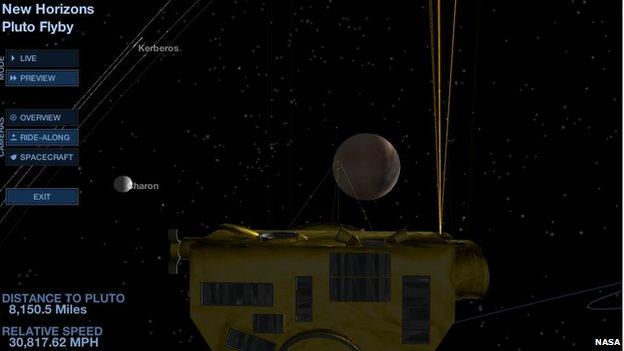
The latest Nasa graphic of New Horizons fly-by
The New Horizons probe has made history by reaching its closest approach to Pluto at 8,150 miles from its surface!
The probe is currently scanning the dwarf planet's equator to find out more about it.

12:40pm - Latest picture
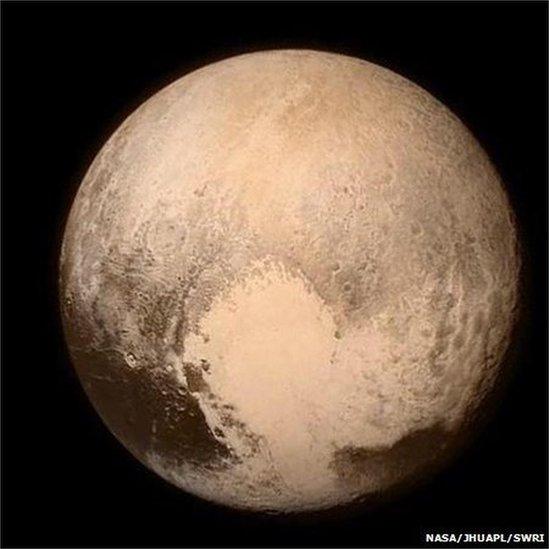
The New Horizons probe is now less than 10 minutes away from its closest approach!
This amazing snap of Pluto, was the last picture the probe sent back to Earth before turning its attention back to the dwarf planet,

12:35pm - Mission control
BBC reporter Rebecca Morelle is at New Horizons mission control
BBC reporter Rebecca Morelle is at the New Horizons mission control centre in America.
She sent us this special report with an update on the New Horizons mission.

12:00pm
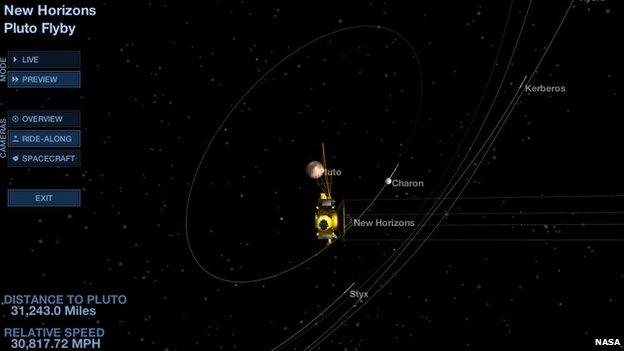
Here is a graphic of New Horizons journey to Pluto
There is only one hour to go now, until the New Horizons probe reaches its closest point to Pluto.
The probe is currently around 31,000 miles from Pluto's surface.

11:40am - When did we first discover Pluto?

US astronomer Clyde Tombaugh using the Lowell telescope
Pluto was officially discovered in 1930 by American astronomer Clyde Tombaugh, who was using one of the most powerful telescopes at the time at the Lowell Observatory in Arizona, USA.
Pluto was named by an 11-year-old schoolgirl from Oxford, England, who liked classical mythology and chose to name it after the ancient god of the underworld.

11:27am - Is Pluto a planet?
Watch Martin's report
For more than 70 years Pluto was classed as a planet, until 2006, when the International Astronomical Union down-graded it to a dwarf planet.
A dwarf planet orbits the sun just like other planets, but it is smaller. Pluto is so small it cannot clear other objects out of its path.
The latest research from the New Horizons probe says that Pluto is around 2,370km in diameter.
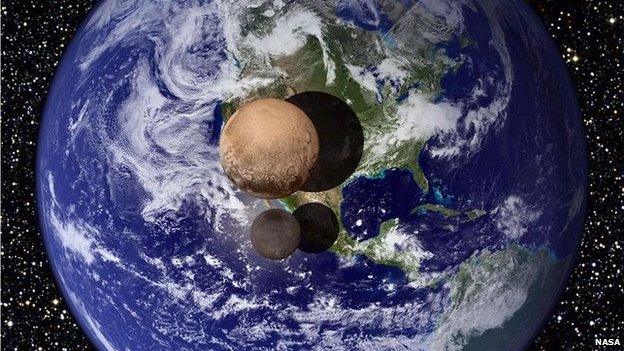
How Pluto and its biggest moon, Charon, compare in size to the Earth

11:07am
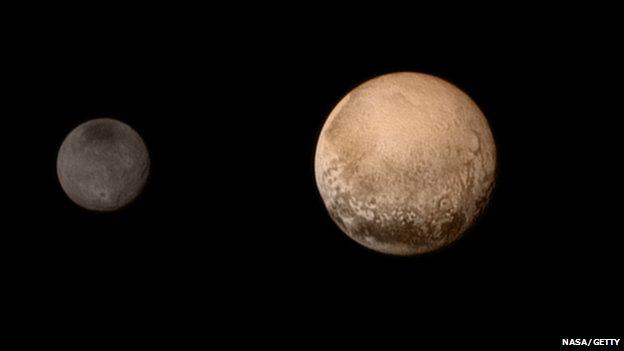
The New horizons probe is now less than two hours away from its closest approach to Pluto.
The probe will fly pass the dwarf planet at just 12,500 km from its surface travelling at around 31,000 mph.
During this time the probe will have a short window of time to take pictures and gather data on the dwarf planet and its five moons: Charon, Styx, Nix, Kerberos and Hydra.
- Published14 July 2015
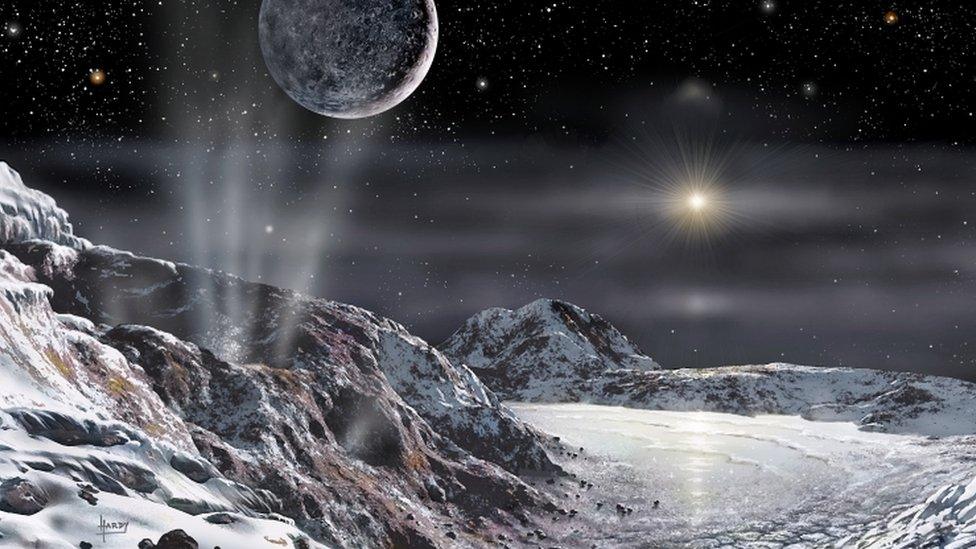
- Published4 June 2015

- Published9 July 2015
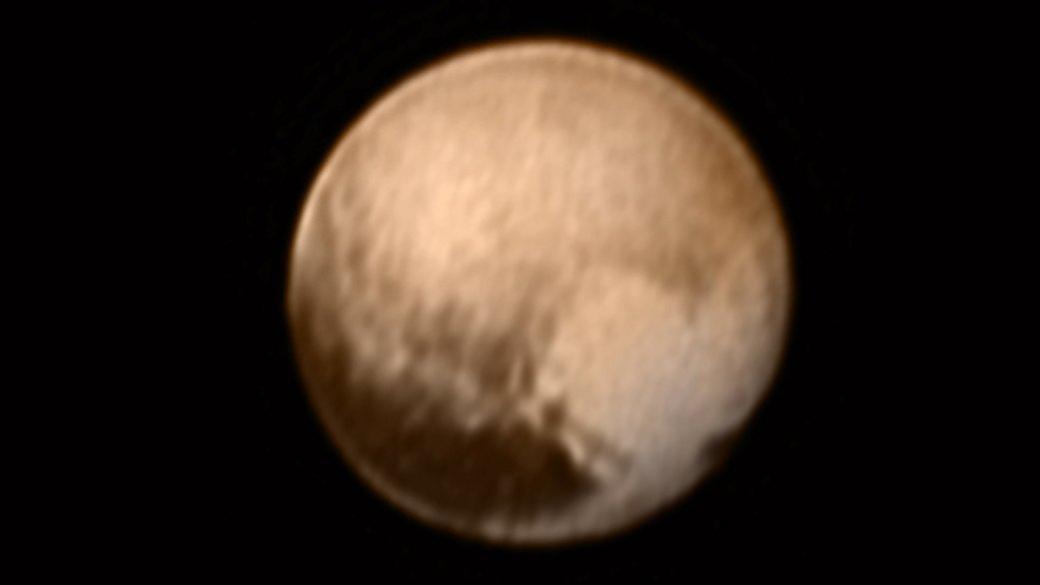
- Published3 October 2014
